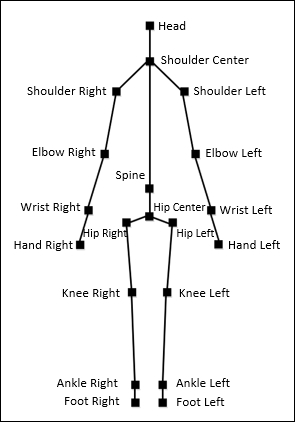The Kinect for Windows SDK provides us with a set of APIs that allow easy access to the skeleton joints. The SDK supports the tracking of up to 20 joint points. Each and every joint position is identified by its name (head, shoulders, elbows, wrists, arms, spine, hips, knees, ankles, and so on), and the skeleton-tracking state is determined by either Tracked, Not Tracked, or Position Only. The SDK uses multiple channels to detect the skeleton. The default channel tracks all 20 skeletal joint positions with the Tracked, Not Tracked, or Inferred tracking mode. The following diagram represents a complete human skeleton facing the Kinect sensor, shaped with 20 joint points that can be tracked by the Kinect for Windows SDK:

Kinect can fully track up to two users, and can detect a maximum of six users within the viewable range; the other four are known as proposed skeletons. You can only get the complete 20 joints for the fully tracked skeletons; for the other...



